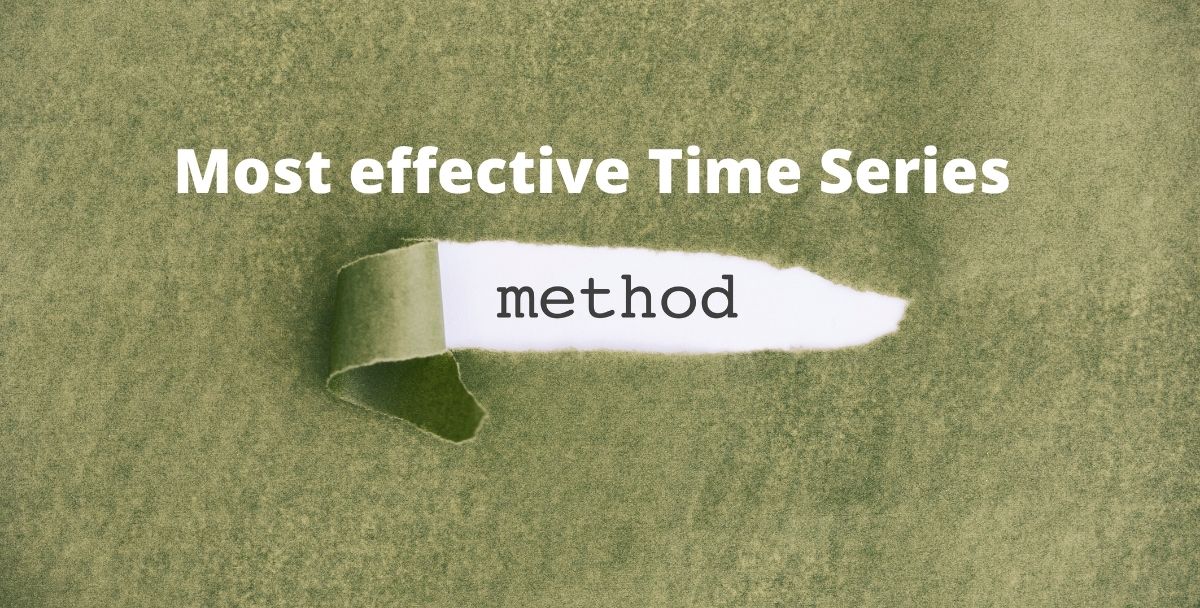Most effective Time Series Methods

The most vital concept which is encountered in our daily life is Time Series Analysis. Almost all business and industry sectors are hooked on this analysis for developing their business strategies and understand how the past influences the future. These methods help to monitor, clarify and predict certain pros and cons behaviour of the organization.
In a nutshell, the entire domain of Data Science which incorporates AI and Big Data have redefined these business forecasting methods. This particular blog will walk you through a couple of specific time-series methods which are quite essential to know for us. Let’s start understanding them.
Introduction
So, what do we mean by Time Series?
Time series are often defined as a sequence of time-based data points which are collected at specific intervals of a given phenomenon that tends to change over time as it and are indexed consistently with time. It is used to determine the best model which is further used to forecast business factors such as sales, turnover, stock price and more. It also allows the business management to understand timely patterns in order to get a better than average view of the future.
There are four variations of time series which includes Seasonal variations, Trend variations, Cyclical variations, and Random variations.
The usage of time series models comes in two-fold i.e Obtaining an understanding of the forces that produce the observed data and fitting a model for forecasting, monitoring or maybe feedback control.
Pros and Cons of Time Series
Time series analysis has various benefits for the data analyst which are cleaning data, forecasting and understanding data, interpreting the true meaning of data and making optimal business decisions.
Time series analysis also has a few drawbacks which include difficulty in obtaining appropriate measures, problems with generalization from a single study, and accurately identifying the correct model to represent the data.
Techniques of Time Series Analysis
The fitting of time series models involves many techniques which include the following: Box-Jenkins Multivariate and ARIMA models, Holt-Winters Exponential Smoothing (single, double, triple).
Most effective Time Series methods
Keeping the blog short and precise, we shall now understand the five most effective time series methods for business development.
Time Series Regression
The first comes to the Time Series Regression which is defined as a statistical method used for predicting a future response that is based on the past regression history (autoregressive dynamic). A time-series helps to measure data over a specific period of time but regression analyzes the mean of the dependent variable in relation to changes in the independent variable.
The three prime goals which are achieved by regression analysis includes predicting, modelling, and characterization.
The process of time series regression is divided into three parts namely planning, development, and maintenance. Planning defines the problems, selects a response, and finally suggests variables. It actually establishes a goal, prepares a budget, and makes a schedule with the company. Next comes the development phase which collects and checks the quality of the date and then finds the best models. The last is maintenance which checks if all parameters are stable and the model periodically using statistical techniques.
Time Series Analysis in Python
Time Series is quite essential in Python as it involves a number of representations of dates, times, and timespans. Importing the Pandas software library in Python program code provides very specific tools which are used for financial data to ensure business growth. Time Stamps normally refers to particular moments in time. Their type is based on the efficient NumPy.datetime64 datatype. On the contrary, time intervals and periods refer to the length of time between a beginning and its endpoint. And Time deltas or durations refers to an exact length of time.
Time Series in R
R is one of the most popular programming languages and free software environments which is made up of a collection of libraries. Most business managers find that the rich library of R provides fantastic features with presentation and documentation and so it makes R the best choice for statistical analysis and makes it much easier to explain analysis to the team. It provides qualities and formal equations for time series models that include simulating, modelling, and forecasting time series trends.
Time Series Data Analysis
Time-series data analysis is performed by gathering and collecting data at different points in adjacent time periods. Time series data can be found in various sources such as Economics including GDP, CPI, unemployment rates, and more, Physical sciences including Monthly sunspot observations, global temperatures, pollution levels and Medicine including Weight tracking, cholesterol measurements, heart rate monitoring, and BP tracking.
Deep Learning for Time Series
Finally, comes the deep learning for Time series. Deep learning methods offer time-series forecasting capabilities such as automatic learning and handling of temporal structure, temporal dependence. The benefits of using Deep Learning to analyze our Time Series are Easy-to-extract features, they are good at extracting patterns and also easy to predict from training data.